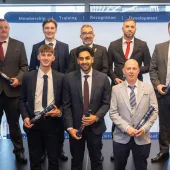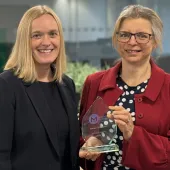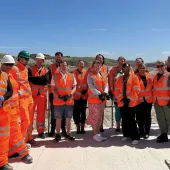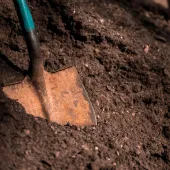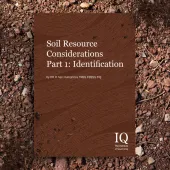2012 Institute of Quarrying Annual Conference Review
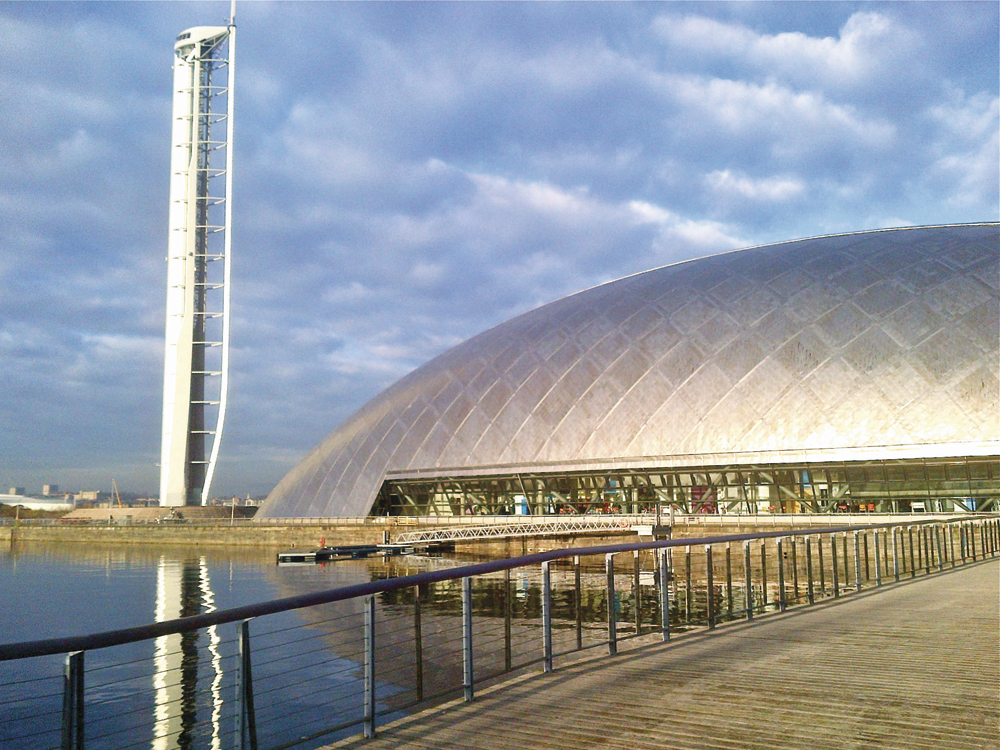
Essential investment and resources for the future
This year’s Institute of Quarrying annual conference, hosted by the Scottish branch with assistance from MPA Scotland, took place on Friday 30 November at the spectacular Glasgow Science Centre at Pacific Quay, on the south bank of the river Clyde. Opened to the public in 2001 as Scotland’s flagship millennium project, the purpose-built venue comprises three principal buildings – the Science Mall, an IMAX cinema and the Glasgow Tower – all of which are clad in cutting-edge materials, including titanium and aluminium, to form a single entity thanks to features such as a linking Teflon fabric roof and ‘discovery’ tunnel.
The conference symposium, on the theme ‘Essential Investment and Resources for the Future’, took place in the 370-seater IMAX cinema beneath its vast 25m x 19m screen. Following a brief introduction to the day’s proceedings by Colin Jenkins, President of the Institute of Quarrying, the 120 delegates in attendance listened intently to Fergus Ewing, Scottish Government Minister for Energy, Enterprise and Tourism, as he set the tone of the event with his keynote address.
Expressing his keenness to work with the minerals industry, Mr Ewing said a strong, vibrant and thriving mineral products and quarrying sector was vital for the Scottish economy, in order to construct the roads, housing, schools, offices, wind farms, hydro schemes that the country needs. ‘We believe that to drive out of recession, we need to boost construction projects and jobs. To pursue that objective, we have committed around £9 billion over the next spending period to capital projects, and want to see a continuous pool of roads and other projects go ahead as swiftly as possible,’ he said.
Recognizing that planning delays can be extremely frustrating and costly for quarry operators, Mr Ewing admitted that the planning system was in need of improvement and said his colleague, Derek Mackay, Minister for Local Government and Planning, was taking forward work to try to tackle this problem. ‘We want to make sure that the regulatory and planning system does not stand in the way of sustainable development,’ he said.
Mr Ewing also highlighted the opportunities arising from new areas of work on on-shore wind farms and additional hydro projects, as a result of the Scottish Government’s ‘renewables’ polices. In particular, he pointed to the potentially huge opportunities likely to arise from the offshore wind industry. ‘Work needed to connect our marine and on-shore renewable energy to the grid is of huge value to the Scottish economy, and will continue to be so,’ he stated. ‘I would like to work closely with your sector to ensure you gain the full benefits from this work, which should be available in within a few years.’
Before the next speaker took the floor there was a short pause in the conference proceedings for the traditional presentation of prizes and awards for the Institute’s Professional Examination, which saw Jonathan Kent of Imerys picking up the prestigious Leonard Clugston Award for the best overall results (see accompanying table for a full list of the winners).
With all the award winners back in their seats, John Fraser, non-executive director of Transport Scotland FRC Project Board, took the floor to present ‘A view of the Forth Replacement Crossing’. Currently the largest construction project taking place in the UK, the Forth Replacement Crossing (FRC) project involves the construction of a 2.7km long, three-tower, cable-stayed road bridge alongside the existing Forth Road Bridge at Queensferry, together with around 4km of new connecting roads and upgraded junctions.
In his wide-ranging and detailed presentation, Mr Fraser explained why the new crossing is needed before elaborating on key aspects of the project, including: timings, planning, feasibility studies and consultations; budgets, financing and risks; procurement, tenders and contracts; bridge design and construction; and environmental constraints. Construction of the new bridge commenced in September 2011 and, at present, is on track for completion on budget and on time in 2016.
Following the mid-morning coffee break, delegates returned to the IMAX cinema to hear Murray Provan, HM Inspector of Safety (Construction), give a presentation on Health and Safety Executive priorities and goals. Mr Provan said HSE goals included raising and maintaining the profile of health and safety, simplifying guidance, revoking unnecessary legislation, and securing justice. Among the Executive’s priorities, he cited working at height, site welfare facilities, asbestos, silica dust, refurbishment works and major projects as key areas for intervention, while leadership, engagement and competence (both individual and corporate) were, he said, key to an effective health and safety culture on site.
Next to take the floor was Dougie Millar, materials and QA advisor with Transport Scotland. In a presentation entitled ‘Research for the future’, he focused on new approaches to road research and funding, including establishing links with other research bodies and encouraging academia to get involved, with the aim of improving the road network, saving money and delivering innovations. He also explained the role of the Scottish Road Research Board and the Scottish Inspection Panel, and highlighted the work of the Transport Scotland Pavement Forum in developing a new surface course specification for the trunk road network in Scotland.
After lunch, the afternoon session began with a presentation entitled: ‘Aggregates: a natural strategic resource’, by Prof. Sean Smith, director of the Institute for Sustainable Construction at Edinburgh Napier University. With the aggregates industry described as a ‘mega sector’ in European Union reports, Prof. Smith highlighted some of the strategic and critical issues facing the sector both locally and across Europe, and examined some of the potential opportunities and catalysts for development of the sector. His presentation also included a wealth of graphics and statistics demonstrating the significance of the aggregates sector to the economies of Scotland and the UK, and Europe as a whole.
The conference proceedings concluded with the triennial McPherson Lecture, which this year was delivered by Prof. Iain Stewart, chair of geoscience communications at the School of Geography, Earth and Environmental Sciences at Plymouth University and popular presenter of BBC TV programmes that have brought geology ‘into the living room’ in a style that appeals to all. He explained that that in order to get geology and geoscience across to the general public in a way that appeals, it is necessary to connect with things that people are interested in.
‘In the same way that programmes on archaeology and cosmology have become very popular, the reason why geology works on TV is because it is another of the ‘historical sciences’ with stories that unfold over time,’ he said. ‘And by showing, in an entertaining way, how ancient geology affects and impacts on people’s lives today, viewers are drawn in. Even the most boring rocks on the planet can tell the most amazing stories.’
Prof. Stewart said a similar approach could be adopted by the quarrying industry. ‘Quarries are often seen as alien worlds by members of the public, but they are actually important receptacles of ancient geodiversity, treasure houses of geoheritage and portals into the past. People are generally far more fascinated by these aspects than the economic and social benefits that quarries provide, but by giving them an insight into these amazing lost worlds and illustrating the significance of the rocks beneath their feet, they are likely to be far more amenable to hearing about the important economic and social aspects of the industry.’
Quarrying Award Winners 2011–12
Leonard Clugston Prize (Average of all nine modules)
Prize winner: Jonathan Kent (Imerys)
Reginald W Coles Prize (Average of two Health, Safety & Environment Part B modules)
Prize winner: Arnold Marsden (Tarmac)
Runner-up: David Orton (Hanson)
Peter Preston Award (Average of two Quarry Technology Part A modules)
Prize winner: David Orton (Hanson)
Runner-up: Arnold Marsden (Tarmac)
Tilcon Award (Business Management)
Prize winner: Jonathan Kent (Imerys)
Runner-up: Ivan Connor (self-financed)
Ransomes Rapier Award (Average of two Engineering modules)
Prize winner: Jacob Foot (FH Gilman)
Runner-up: Jonathan Kent (Imerys)
Rexnord Award (Quarry Blasting)
Prize winner: Dominic Hodgson (Hanson)
Runner-up: Jacob Foot (FH Gilman)
Goodwin Barsby Award (Construction Materials)
Prize winner: Mark Yates (Tarmac)
Runner-up: Ivan Connor (self-financed)
Springbank Quaich (Scottish IQ branch award)
Prize winner: Steve McGarvie (Aggregate Industries)


